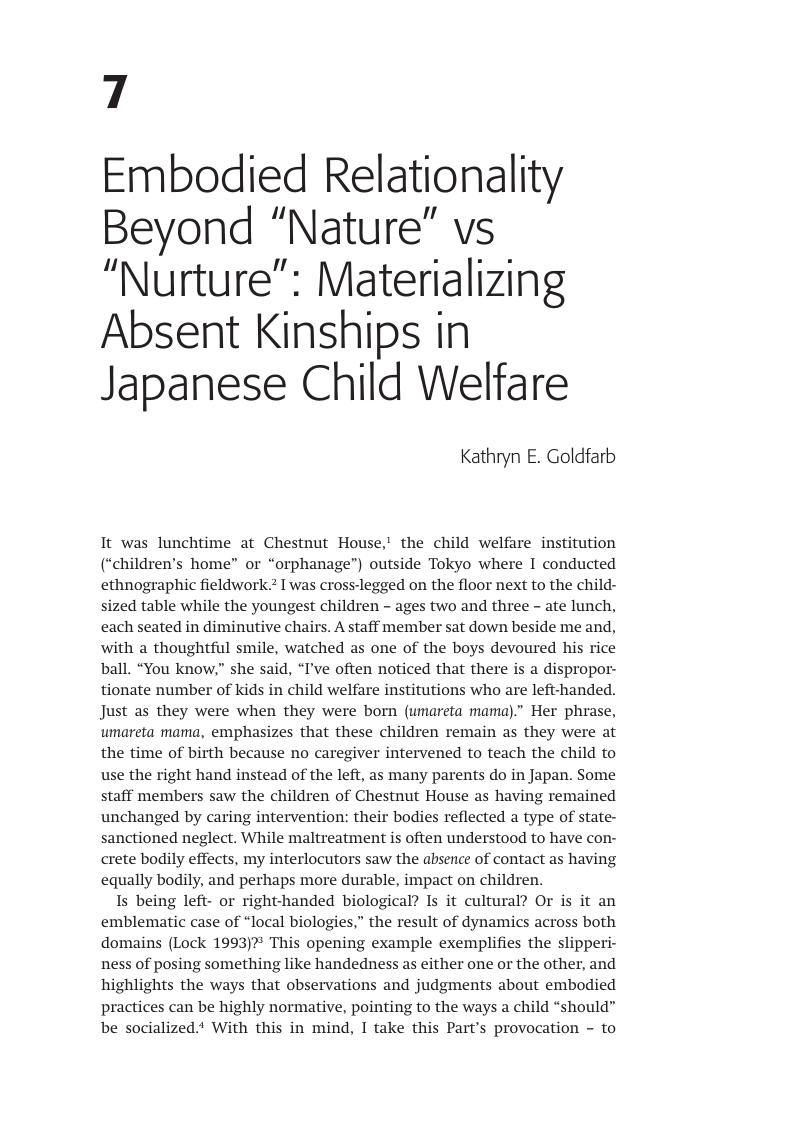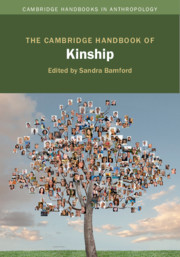Book contents
- The Cambridge Handbook of Kinship
- Cambridge Handbooks in Anthropology
- The Cambridge Handbook of Kinship
- Copyright page
- Contents
- Figures
- Tables
- Contributors
- 1 Introduction: Conceiving Kinship in the Twenty-First Century
- Part I Opening Frameworks
- Part II The (Non)Biological Basis of Relatedness
- 7 Embodied Relationality Beyond “Nature” vs “Nurture”: Materializing Absent Kinships in Japanese Child Welfare
- 8 Kinship in the Andes
- 9 Kinship and Place: The Existential and Moral Process of Landscape Formation on the Rai Coast of Papua New Guinea
- 10 Adoption
- 11 “Natural” Achievements: How Lesbian and Gay Families in North America Make Claims to Kinship
- Part III Reproducing Society: Gender, Birth, and Power
- Part IV Transnational Connections
- Part V Technological Conceptions
- Part VI Kinship and the Nation-State
- Index
- References
7 - Embodied Relationality Beyond “Nature” vs “Nurture”: Materializing Absent Kinships in Japanese Child Welfare
from Part II - The (Non)Biological Basis of Relatedness
Published online by Cambridge University Press: 22 April 2019
- The Cambridge Handbook of Kinship
- Cambridge Handbooks in Anthropology
- The Cambridge Handbook of Kinship
- Copyright page
- Contents
- Figures
- Tables
- Contributors
- 1 Introduction: Conceiving Kinship in the Twenty-First Century
- Part I Opening Frameworks
- Part II The (Non)Biological Basis of Relatedness
- 7 Embodied Relationality Beyond “Nature” vs “Nurture”: Materializing Absent Kinships in Japanese Child Welfare
- 8 Kinship in the Andes
- 9 Kinship and Place: The Existential and Moral Process of Landscape Formation on the Rai Coast of Papua New Guinea
- 10 Adoption
- 11 “Natural” Achievements: How Lesbian and Gay Families in North America Make Claims to Kinship
- Part III Reproducing Society: Gender, Birth, and Power
- Part IV Transnational Connections
- Part V Technological Conceptions
- Part VI Kinship and the Nation-State
- Index
- References
Summary

- Type
- Chapter
- Information
- The Cambridge Handbook of Kinship , pp. 153 - 178Publisher: Cambridge University PressPrint publication year: 2019

